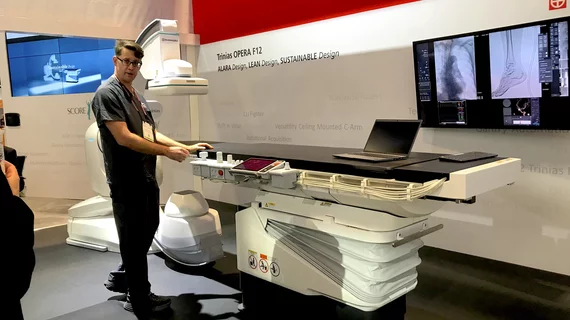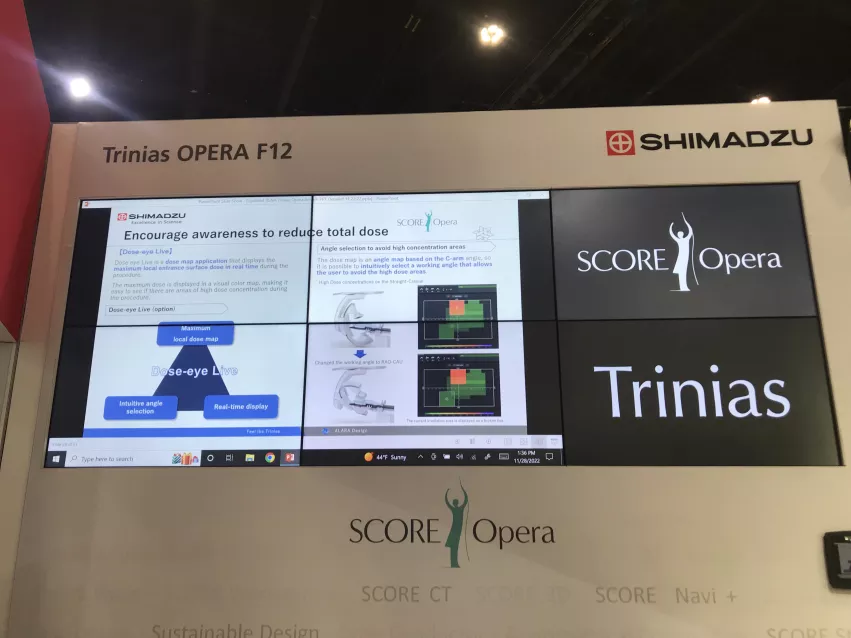Radiation and workflow concerns addressed in new Shimadzu angiography system
To address radiation concerns by interventionalists and to help speed workflows in cath labs, Shimadzu Medical Systems USA released the latest version of its Trinias angiography system at the Radiological Society of North America (RSNA) 2022 meeting.
The Trinias with SCORE Opera F12 system uses artificial intelligence (AI) deep learning technology to improve the visibility of medical devices while using 40% (or more) less radiation than previous models. This is the first time AI has been incorporated into the Trinias image processing engine.
"The AI allows us to feed lots of image data to the imaging system and it learns what the devices are in the field of view to enhance them," explained Tim Stevener, MBA, director of interventional X-ray business, Shimadzu Medical Systems USA.
In addition, the system shows the amount of cumulative dose delivered to a patient during a procedure in the different working angles of the C-arm in a visual display on the overhead screen. Thresholds for dose can be set, and the system will show a color code of the dose and alert the operator when a threshold has been crossed. The dose also can be adjusted table side.
The new Trinias system also offers several features to simplify workflow using a lean design approach. This includes a redesign of the C-arm to allow side-acquisition CT, and a larger distance to enable better patient access.
The table side modules are redesigned to make them 20% smaller, and the modules can be moved around and customized. Several features for C-ram and table movements have also been incorporated into single button pushes. An example of this is a peripheral mode button push, where the C-arm swings out of the way when moving the table around, and a femoral button push that moves the table and C-arm into position automatically to enable femoral access.
The vendor also launched a subscription service that ensures software can always be updated to the current version.
Medical facilities are increasingly operating angiography systems at low radiation levels to reduce X-ray doses, but low radiation levels also lead to X-ray noise that reduces device visibility. To support the low-dose operation of angiography systems, Shimadzu developed SCORE Opera, a new image processing technology that uses AI to ensure catheterization procedures are safe even at low radiation doses.
The vendor did an unveiling event on the expo floor the first day of RSNA 2022.


